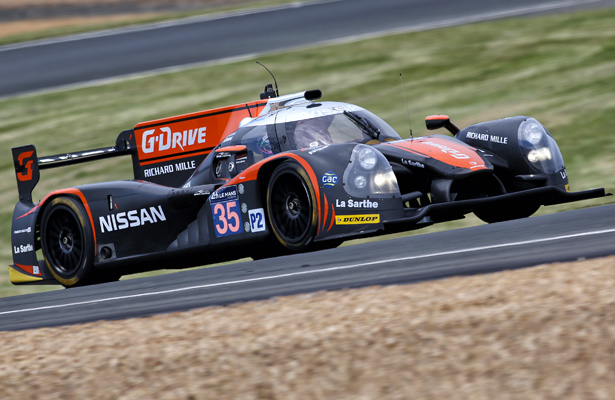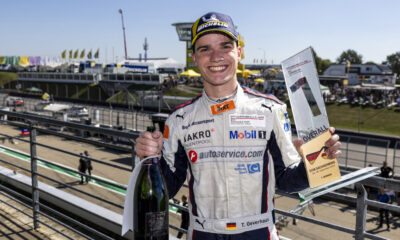
Photo: DPPI/Onroak Automotive
Progress continues to be made on the creation of a common set of global prototype regulations for 2017, with officials from the FIA, ACO and IMSA, as well as a strong contingent of manufacturers meeting late last month in Paris for a roundtable.
The points of discussion, according to IMSA’s VP of technical regulations, Scot Elkins, was to gain feedback on key points on the new platform, which will replace the current P2 regulations worldwide, as well as becoming the new Prototype class in the TUDOR United SportsCar Championship.
“The idea was to get feedback from everyone on the guidelines,” Elkins told Sportscar365. “We’re targeting a reduction in season budgets, looking at the cost cap, trying to define what type of bodywork we’re going to use and things like that. All of that was discussed.”
With a target of a 30 percent reduction in full-season operating costs, a number of budget-minded initiatives were discussed, including the possibility of having a certain amount of common parts among manufacturers.
“We did talk about having a common tub and got some feedback on that,” Elkins said. “We’re looking at everything here because I think the idea is that we have to look at everything again in order to try and meet some of these budget reduction goals we have.”
Another key talking point was the concept of manufacturer-specific bodywork, which was initially proposed for the TUDOR Championship only, with separate bodywork to be developed for ACO championships.
However, Elkins said most manufacturers appeared to be in agreement of utilizing the same bodywork regulations globally, with the design cues similar to the proposed LMP1 Evo concept in 2006-07.
“What was interesting was that everyone agreed that they would like a similar style of bodywork that we have now on the DPs, so we can have a distinction between P1 and P2 cars,” Elkins said.
“Even the FIA and the ACO guys and the manufacturers all found that interesting that we could have something that looked a little different.
“It’s not full-on manufacturer bodywork but to have the opportunity that if someone wanted to do that, it would be there.”
Other topics discussed included cost-capped rules, engine lifespans, the possibility of two different car configurations (fast and slow track) and the use of commercial tires only, as further cost-cutting measures.
The performance of the new platform could be slightly increased, depending where they end up with the 2016 GTE regulations, which also calls for a boost in power.
No decision, meanwhile, has been made on the possibility of grandfathering existing cars into the new regulations.
Elkins said he was pleased with the turnout of the initial meeting, which had a “nice mix” of chassis manufacturers, car companies and engine builders. A total of 10 manufacturers were in attendance.
“It’s very important and it’s something that everyone wants,” he said of the new regulations. “You go around the room and talk to everybody, they all say the same thing, that it makes a lot of sense to have the same type of car that can race around the world.
“We’re very much behind this ability of having cars come and race with us and not have something specific to the TUDOR Championship.”
The ACO, FIA and IMSA will review feedback from manufacturers in the coming weeks and establish recommendations for the next meeting, which is scheduled for the week following the Rolex 24, in Daytona.
Elkins said the target is to have the regulations completed and announced by June of next year.

























